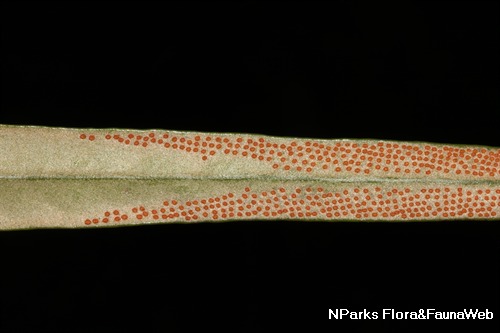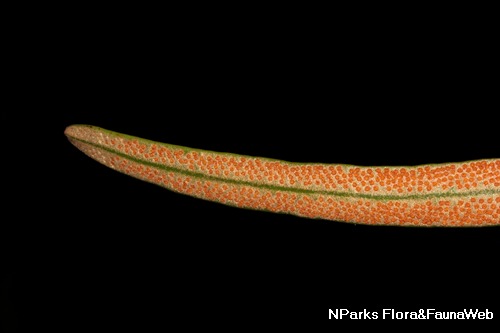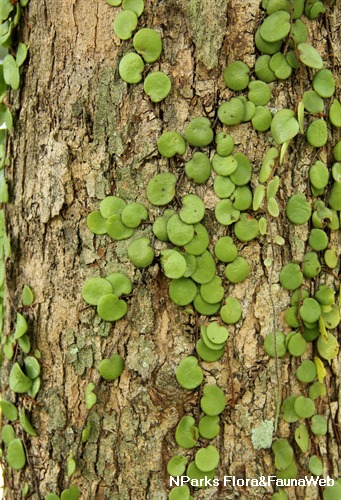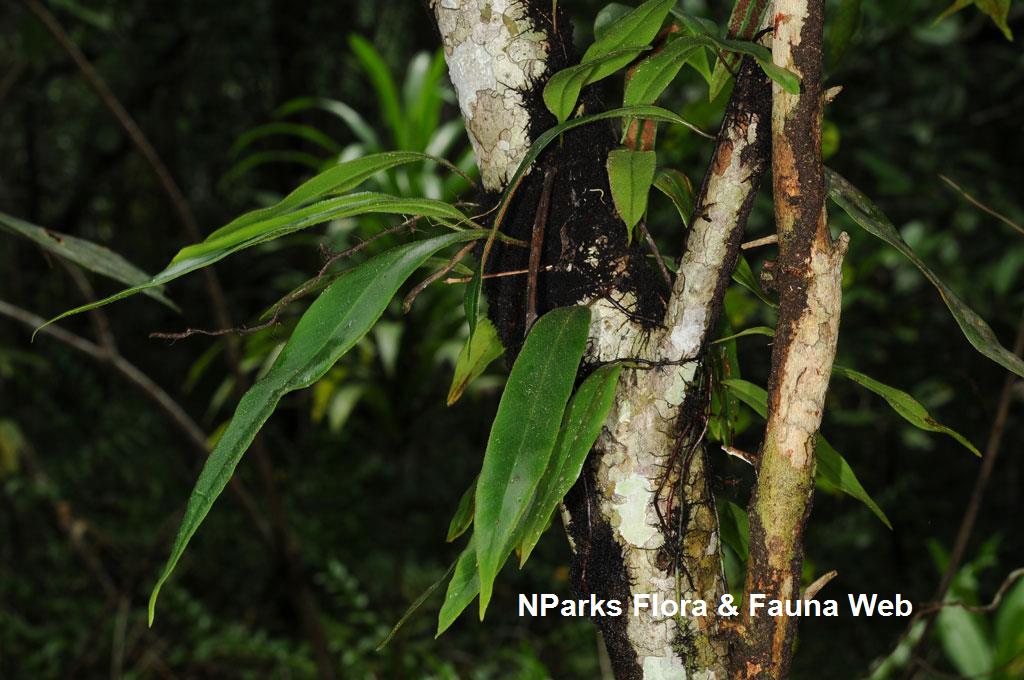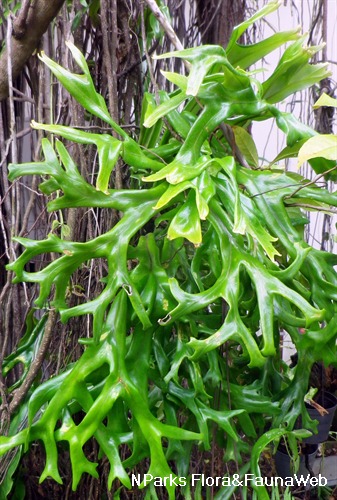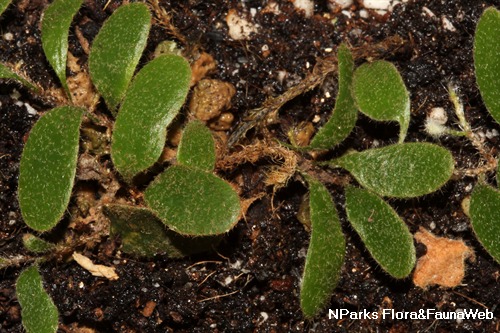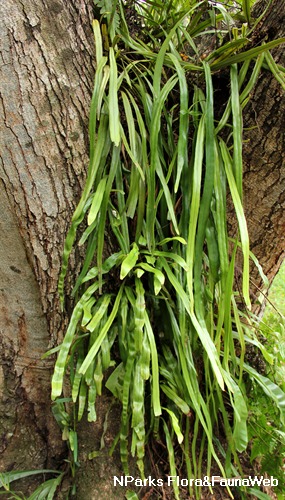
Back
Pyrrosia longifolia (Burm.f.) C.V. Morton
| Family Name: | Polypodiaceae |
| Synonyms: | Polypodium acrostichoides Forst |
| Common Name: | Suloi, 南洋石韦 |
Pyrrosia longifolia or Suloi is an epiphytic fern native to Singapore. It has stiff strap-shaped fronds, rigid rhizomes and round sori found near the tips of the fronds on the underside. Scales on the rhizomes are appressed, shiny, dark coloured with a smooth margin.
Name
Classifications and Characteristics
| Plant Division | Ferns & Lycophytes (Non-Seed Vascular Plants) (Fern) |
|---|---|
| Plant Growth Form | Epiphyte, Herbaceous Plant |
| Lifespan (in Singapore) | Perennial |
| Mode of Nutrition | Autotrophic |
| Maximum Height | 1 m |
Biogeography
| Native Distribution | South China, Cambodia, Vietnam, Thailand, Peninsular Malaysia, Singapore, Indonesia, and the Philippines |
|---|---|
| Native Habitat | Terrestrial (Primary Rainforest, Secondary Rainforest, Monsoon Forest, Coastal Forest, Freshwater Swamp Forest, Disturbed Area / Open Ground) |
| Preferred Climate Zone | Tropical, Sub-Tropical / Monsoonal |
| Local Conservation Status | Native to Singapore (Least Concern (LC)) |
Description and Ethnobotany
| Growth Form | It is a epiphytic fern with long creeping, slender rhizomes and elongated fronds. |
|---|---|
| Foliage | The fronds are monomorphic, thick, stiff, strap-shaped, gradually narrowing on both ends, 10 - 110 cm long and up to 0.7 - 4.5 cm wide. |
| Reproductive Parts - non-flowering plant | The sori are round, found near the tips of the fronds on the underside. |
| Others - Plant Morphology | The rhizomes are long-creeping, about 1.8- 2.7 mm wide, covered in scales. Scales are appressed, round, shiny brown to blackish coloured with a smooth margin measuring 1 - 3.4 mm long and 0.6 - 1.5 mm wide. |
| Habitat | Occurs in various types of forest commonly as an epiphyte, in disturbed or open situations and in the littoral zone of mangroves, from sea level to 1000m in altitude. |
| Similar | Pyrrosia longifolia is similar to Pyrrosia lanceolata. The key differences are Pyrrosia longifolia have rigid rhizomes, smooth margins and monomorhpic, stiff fronds while the latter have flexibile rhizomes, scales with hairs on the margins and dimorphic fronds. |
| Cultivation | It can be propagated by spores. |
| Etymology | Greek pyrros, flame-coloured; Latin longifolia, long leaves, referring to the long fronds of the plant |
Landscaping Features
| Desirable Plant Features | Ornamental Foliage |
|---|---|
| Landscape Uses | Parks & Gardens, Small Gardens |
Fauna, Pollination and Dispersal
| Seed or Spore Dispersal | Abiotic |
|---|
Plant Care and Propagation
| Light Preference | Semi-Shade, Full Sun |
|---|---|
| Water Preference | Moderate Water, Little Water, Occasional Misting |
| Plant Growth Rate | Fast to Moderate |
| Rootzone Tolerance | Shallow Media |
| Propagation Method | Spore |
Foliar
| Foliage Retention | Evergreen |
|---|---|
| Mature Foliage Colour(s) | Green |
| Mature Foliage Texture(s) | Leathery |
| Foliar Type | Simple / Unifoliate |
| Foliar Shape(s) | Non-Palm Foliage (Lanceolate, Linear) |
| Foliar Margin | Entire |
References
| References | Hovenkamp, P.H. (1998). Pyrrosia. In: Hovenkamp, P.H. (ed.) Flora Malesiana, ser. 2, Pteridophytes, vol. 3, pp. 163 - 164. Leiden: Rijksherbarium. |
|---|
Image Repository
Others
| Master ID | 274 |
|---|---|
| Species ID | 1570 |

.jpg)
.jpg)
.jpg)
.jpg)
.jpg)
.jpg)
.jpg)
